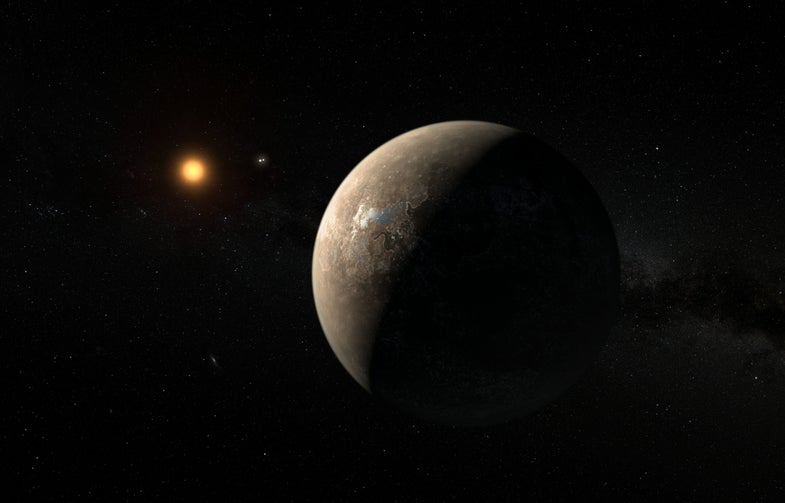If Proxima b has an atmosphere like Earth’s, it might be habitable
But that's a pretty big 'if'

A second Earth may orbit our nearest neighboring star, and according to new simulations, it may be comfortable for life as we know it. Maybe.
Proxima b is thought to be rocky and roughly Earth-sized, and it orbits its star in the habitable zone, where it’s theoretically not too hot and not too cold for water to form lakes and streams on its surface. Plus, it’s only about 25 trillion miles away—how convenient!
It sounds great, right? But there’s still a few things we need to know about Proxima b. We don’t know if it has an atmosphere or water, and as a result we also don’t know what the temperatures are like there. We don’t know if it has a magnetic field to protect its atmosphere from stellar flares, or if it burned to a crisp ages ago.
To see how a few different scenarios might play out, scientists at the University of Exeter plugged Proxima b data into the Met Office Unified Model, which is usually used to model climate change here on Earth.
They found that if Proxima b has an atmosphere similar to Earth’s, or even a simpler atmosphere made of just nitrogen and carbon dioxide, then it stands a pretty good chance of maintaining a comfortable temperature to support liquid water—and by extension, maybe life.
Those results held true even when scientists threw a few theoretical wrenches into the simulation. Proxima b orbits very close to its star, which means that one side of it may permanently face the light source while the other remains dark and cold. Even in this scenario, the “hot” side maxed out at a comfortable 62 degrees Fahrenheit. (The cold side was about -190 degrees, so maybe that’s not a great place to build our future colonies…)
Similarly, they found that if Proxima b has an orbital eccentricity like Mercury—that is, if it spins three times on its axis for every two times it revolves around the sun—parts of it it might still support water (if it has an Earth-like atmosphere).
These results generally line up with what other climate models have suggested, but we still have no idea what’s really going on on this planet. We may just have to send tiny spaceships to find out.